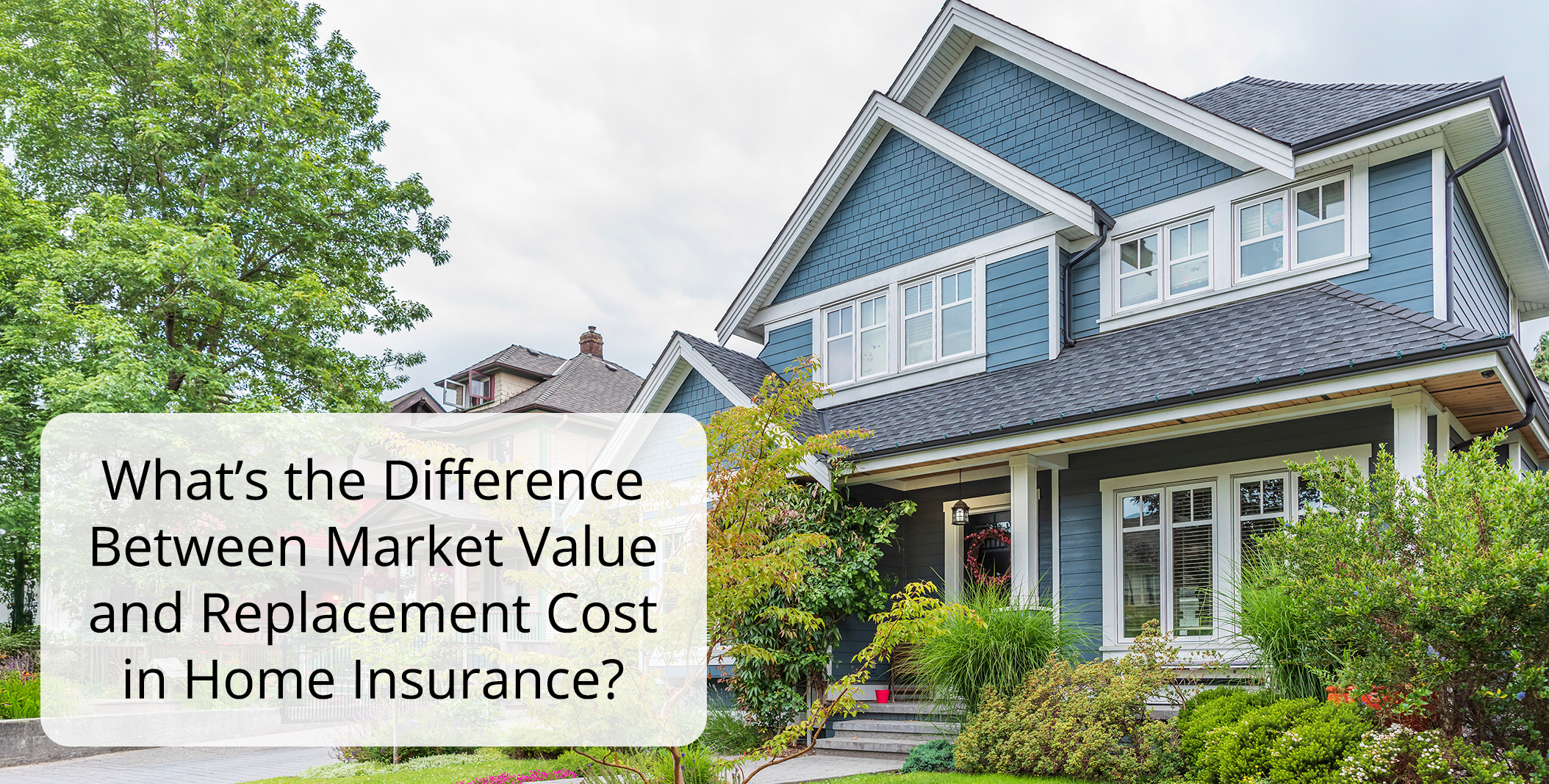
When choosing homeowners insurance, understanding how your property is valued is critical. Two key terms you’ll encounter are market value and replacement cost, which represent different approaches to determining your home’s value and the amount your insurer would pay in the event of a covered loss. These distinctions affect your coverage and, ultimately, your financial protection.
This blog explains the differences between market value and replacement cost, how each impacts your homeowners insurance policy, and how to choose the right valuation method for your needs.
What Is Market Value?
The market value of your home refers to the amount it would sell for in the current real estate market. This figure is influenced by factors such as:
- The home’s location.
- Current real estate trends.
- The home’s size, condition, and features.
- Nearby amenities, schools, and attractions.
Example: If homes in your neighborhood are selling for $300,000, your home’s market value is likely in that range, depending on its condition and features.
Market Value in Home Insurance
If your policy is based on market value, the payout you’d receive after a covered loss would equal the home’s value on the open market. This amount includes both the land and the structure.
Pros:
- Typically results in lower premiums.
- Reflects what your home is worth to potential buyers.
Cons:
- May not cover the full cost to rebuild your home, especially in areas with high land values but lower construction costs.
- Subject to fluctuations in real estate market conditions.
What Is Replacement Cost?
The replacement cost of your home is the amount it would take to rebuild it from the ground up using similar materials and workmanship, without considering the land value or market conditions.
Example: If rebuilding your home after a fire requires $250,000 for labor and materials, your replacement cost coverage would pay for that, even if the home’s market value is higher or lower.
Replacement Cost in Home Insurance
If your policy is based on replacement cost, the insurer calculates the amount needed to rebuild your home with comparable materials and quality, covering labor, permits, and materials.
Pros:
- Ensures you can fully rebuild your home after a loss.
- Not influenced by market trends or land value.
Cons:
- Premiums are generally higher than those for market value policies.
- Rebuilding costs may vary over time, requiring regular updates to your policy.
Key Differences Between Market Value and Replacement Cost
| Aspect | Market Value | Replacement Cost |
| Definition | Amount your home would sell for in the real estate market. | Cost to rebuild your home with similar materials and quality. |
| Includes Land Value | Yes | No |
| Influenced by Market Trends | Yes | No |
| Coverage Amount | Typically lower than rebuilding costs in high-demand areas. | Matches actual rebuilding costs, even if higher than market value. |
| Premium Cost | Lower | Higher |
When to Choose Market Value vs. Replacement Cost
Market Value
Market value-based coverage might be appropriate if:
- The cost to rebuild your home is lower than its market value.
- You’re looking for lower premiums and can afford to cover rebuilding costs out-of-pocket if needed.
- You own an older home where rebuilding it exactly as it was may not be practical.
Replacement Cost
Replacement cost-based coverage is often the better choice if:
- You want to ensure you can rebuild your home entirely after a total loss.
- The cost to rebuild exceeds your home’s market value.
- You live in an area with fluctuating real estate prices or high land values.
Other Important Valuation Terms
Actual Cash Value (ACV)
Some policies use actual cash value instead of replacement cost. ACV takes depreciation into account, paying only the current value of your home or belongings, not the full replacement cost.
Example: If your roof has a 20-year lifespan and it’s 10 years old, ACV coverage would pay only 50% of the cost to replace it.
Guaranteed or Extended Replacement Cost
These policies go a step further, covering rebuilding costs even if they exceed the replacement cost estimate due to inflation or unexpected increases in material prices.
Factors That Affect Replacement Cost
Several factors influence the cost of rebuilding your home, including:
- Construction Costs: Labor, materials, and permits required for rebuilding.
- Home Features: Custom features like high-end finishes, fireplaces, or built-ins increase replacement cost.
- Local Regulations: Updated building codes may require more expensive materials or construction methods.
How to Determine the Right Coverage
- Evaluate Your Budget
Replacement cost coverage offers better protection but comes with higher premiums. Consider how much financial risk you’re comfortable assuming. - Consult Your Insurance Agent
An independent insurance agent can assess your property, explain coverage options, and recommend a policy tailored to your needs. - Update Coverage Regularly
Building costs and home values change over time. Review and update your policy annually to ensure adequate coverage. - Consider Add-Ons
If you choose replacement cost coverage, adding inflation protection or extended replacement cost coverage can safeguard against unexpected cost increases.
Final Thoughts
Choosing between market value and replacement cost in homeowners insurance is a critical decision that affects your financial protection. While market value may save on premiums, it often leaves homeowners underinsured in the event of a total loss. Replacement cost coverage ensures you can fully rebuild your home, making it the preferred choice for most homeowners.
If you’re unsure which option is best for you, consult an independent insurance agent. They can help you evaluate your needs, compare policies, and select the right coverage for your peace of mind.
Having the right homeowners insurance means being prepared for the unexpected—so you can protect what matters most.
Disclaimer: The information provided in this article is for educational purposes only. It is important to consult with a qualified insurance professional for advice tailored to your specific circumstances.